CEO Brad Schwartz
Meet the Morgridge Scientific Team

Brad Schwartz
Our scientists are driven by a curiosity about the fundamental mysteries in biology and a passion to alleviate suffering from disease and improve human health.
Morgridge uses its private status and streamlined organizational structure to respond nimbly to new opportunities in partnership with UW–Madison. In fact, this public-private synergy is our greatest asset: the ability to foster and accelerate new scientific opportunities with a world-class public university, making both entities more competitive in the process.
We remain the only such private biomedical institute of its kind in the Midwest. While only a decade old, we’re building a national model for how this public-private partnership can amplify research excellence.
Morgridge Discoveries

A better way to see inside the eye
The Melissa Skala lab has enhanced optical coherence tomography (OCT), a widely used tool for screening, diagnosis and treatment of eye diseases. OCT gives clinicians detailed 3D images of layers of the retina without using dyes. The Morgridge advance — called photothermal optical coherence tomography (PT-OCT) — provides greater functional contrast to see optical absorbers, such as the melanin, naturally present in the eye.

Unmasking viral replication
The Morgridge Virology Theme led by Paul Ahlquist published a landmark study illuminating, for the first time, the machinery that allows viruses to replicate rapidly inside cells and spread to new targets. The advance may open up new avenues to potentially disrupt, dismantle or redirect viral machinery.

Engineering functional arteries
The James Thomson regenerative biology lab perfected a method of growing arterial endothelial cells—a key step toward creating arteries for vascular surgery. The work offers further proof that scientists can create a reliable cellular source for arteries that perform and behave like the real thing.

Getting personal with pancreatic cancer
Survival rates remain bleak for pancreatic cancer, which kills more than 90 percent of people within the first five years of diagnosis. Medical engineer Melissa Skala has teamed with UW–Madison cancer researcher Dustin Deming to devise more patient-specific and precise treatment improvements, by measuring a tumor’s metabolic response to different drugs.

Mapping mitochondrial proteins
Mitochondria are the engines that drive cellular life, but hundreds of their component parts remain a mystery. Morgridge Metabolism Director Dave Pagliarini sheds light on the more than 200 proteins associated with mitochondria that currently have no defined function. The results will help scientists pinpoint the origins of more than 150 poorly understood diseases associated with mitochondria.

Redefining role of estrogen in cervical cancer
Scientists know the hormone estrogen plays a big role in cervical cancer growth, but a Morgridge virology study examining genetic profiles of 128 clinical cases shows estrogen thrives in the tumor micro-environment — not the tumor itself. The finding will help identify genetic signatures that predict what early stages of human papillomavirus infection are most likely to become cancerous.

Using stem cells to predict neural toxicity
Morgridge regenerative biologists created a faster, cheaper and more biologically relevant way to screen drugs and chemicals that could harm the developing brain. The team developed stem cell “organoids” in a dish that mimic human brain function, and can be used to test a wide range of compounds for neural toxicity — a process that currently costs millions and takes years with animal studies.

Fast, powerful and gentle microscopes
Medical Engineering Director Jan Huisken co-invented light sheet microscopy, which captures the sensitive biology of living specimens in their true functional state. Focused on the model organism zebrafish, lightsheet microscopy produces striking images of cellular movements, beating hearts and developing organs — all while keeping the specimen unaltered.

Identifying ‘clockwork’ genetic expression
Genes that turn on and off in precisely timed patterns, known as oscillatory genes, play an essential role in development functions like cell division and limb formation. But without a time-lapse view of genetic expression, these genes have gone largely undiscovered. An algorithm called Oscope, developed by Morgridge bioinformatics researchers, is helping scientists pinpoint oscillatory genes for the first time.
Our Investigators
Frontiers of Biology

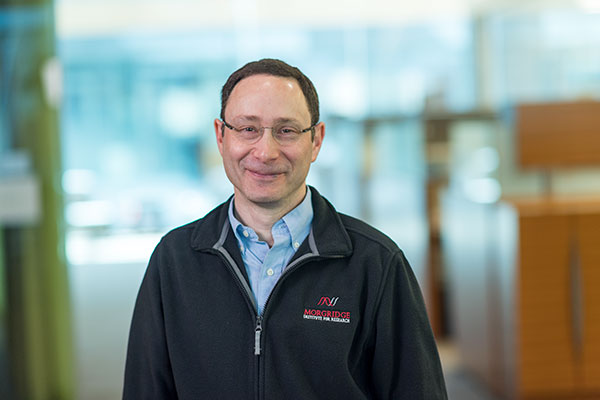


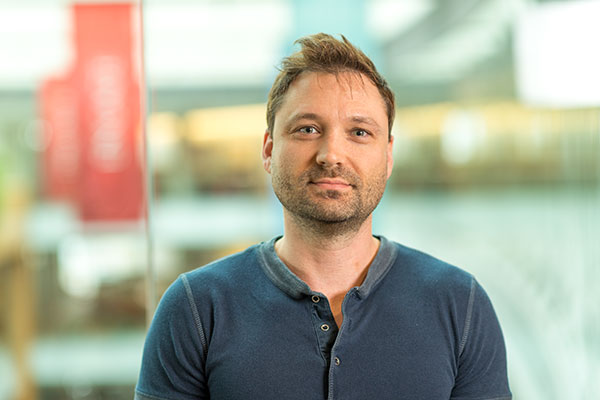


Tools of Discovery
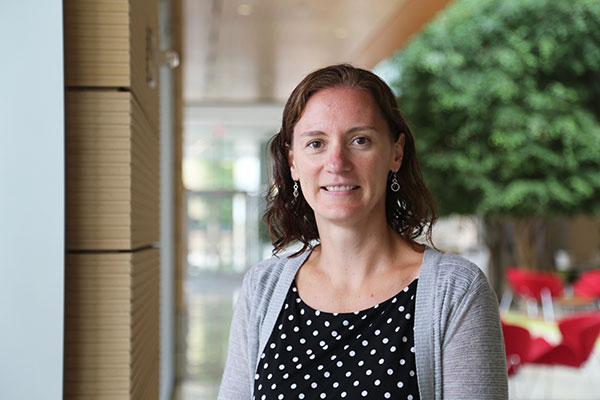

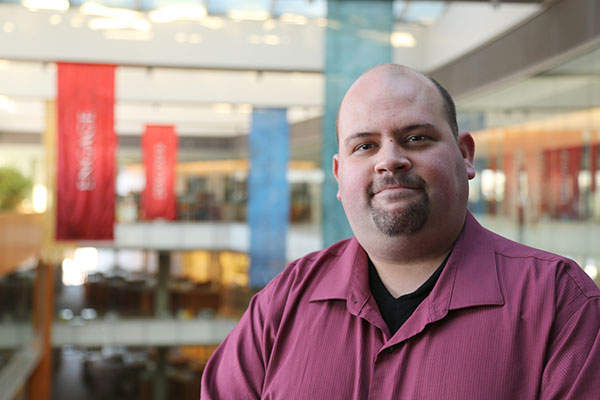
Diamonds in the Data


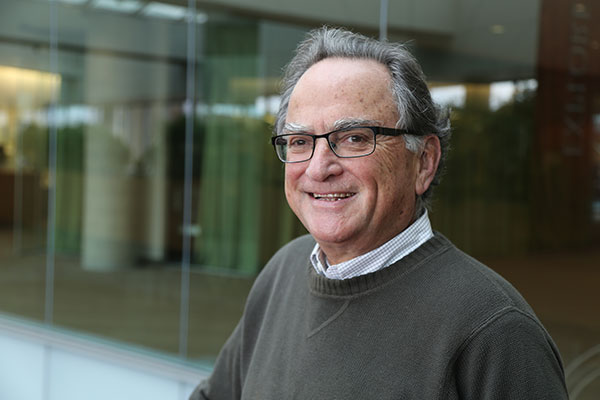
Inspiring the Next Generation
750,000
annual visitors to the Discovery Building
250,000
annual participants in Discovery Outreach programs
400
summer stem cell campers from 70 rural high schools
30,000
statewide participants in the Wisconsin Science Festival
600
UW–Madison contributors to outreach programs
12
unique science outreach programs for the public
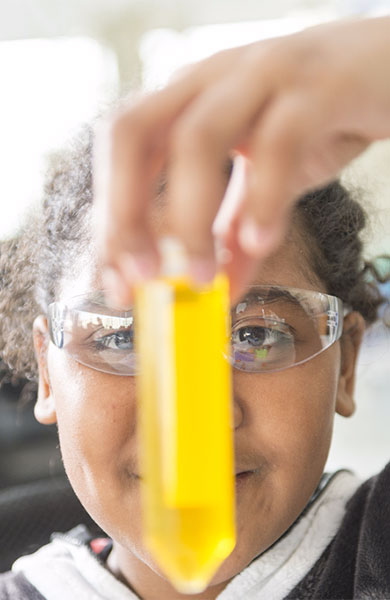
John and Tashia Morgridge
The founding vision behind the Morgridge Institute for Research
 The vision for the Morgridge Institute for Research began in 2005, when we sought to create an outstanding private biomedical research organization that could catalyze, amplify and enhance research at UW–Madison.
The vision for the Morgridge Institute for Research began in 2005, when we sought to create an outstanding private biomedical research organization that could catalyze, amplify and enhance research at UW–Madison.
Private research institutes previously of this kind existed almost exclusively on the East and West Coasts. We envisioned the Morgridge Institute reinforcing the tremendous quality of research happening in the Midwest — particularly Wisconsin — and making our alma mater even more globally competitive. Our partnership with the university and the Wisconsin Alumni Research Foundation (WARF) made this vision a reality.
The institute is now a tremendously exciting place focused on some of the great biomedical challenges of our time, including life-threatening viruses, vascular disease and metabolic disorders. The Morgridge Institute also has cultivated a unique science outreach platform where experts engage curious minds to help enhance the public’s understanding of science.
Our institute’s personality is reflected in the phrase “fearless science.” We recognize that science cannot thrive by asking safe questions, and some risk-taking is needed to truly make progress. We are emboldened by high bioethical standards that enable us to address difficult biomedical challenges. And we are empowered to take the long view of research, which may yield unexpected rewards to human health.
We have colleagues who have spent their entire careers in science tell us, “I would love to be starting a research lab today.” We are at an exciting inflection point in biomedical research, with new tools that revolutionize our approach to science. DNA research, stem cell applications, gene editing and our understanding of the human brain are all in their earliest stages. New computational tools that allow us to generate — and comprehend — astronomical amounts of data will drive new discoveries that change the world.
Support for fundamental biomedical research may be more important today than at any point in our generation. We are in an era where curiosity-driven, basic science receives less mainstream support, in favor of safer questions that promise more predictable results in a shorter time frame.
But basic research is where transformational discoveries happen — and our public-private model here in Wisconsin is helping basic research thrive.

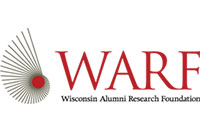

Ways you can make a difference
Improving human health
We believe that a deep understanding of biology will drive tomorrow’s cures. With a discretionary gift to the Morgridge Institute, you help improve human health by igniting new scientific partnerships, retaining outstanding scientists, and supporting the next generation of research talent.
Inspiring future scientists
In a rural state like Wisconsin, many students have few opportunities to learn new, hands-on science or work with scientists on the job. But we believe any student, no matter their economic background, should have the opportunity to learn about science.
Becoming a partner
Science must be pursued fearlessly. That’s why we depend on a growing community of supporters in the Partners in Science society. With an annual gift of $1,000, our partners drive new science and participate in exclusive learning opportunities to see the impact of their support.

